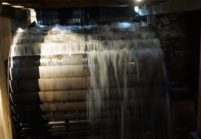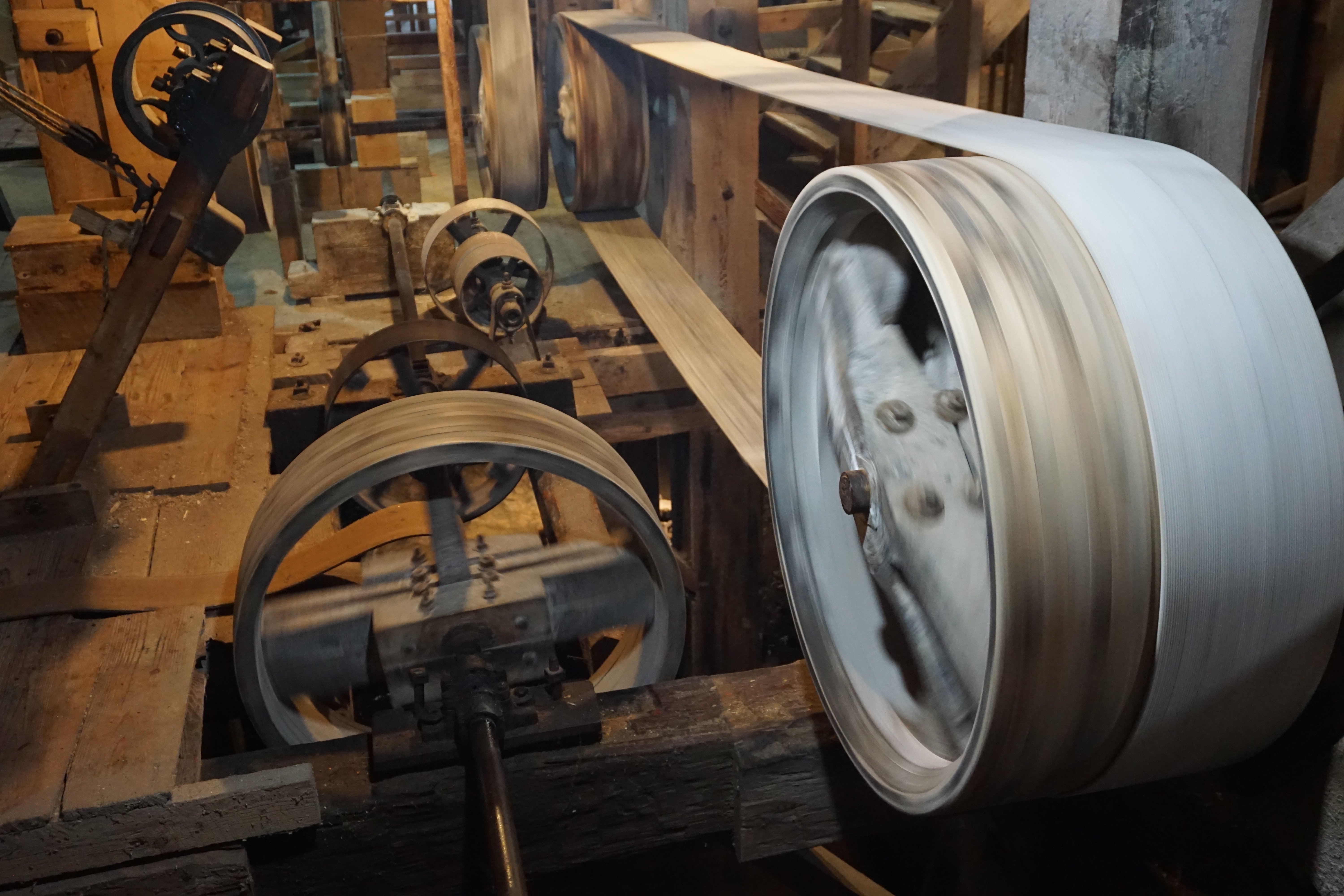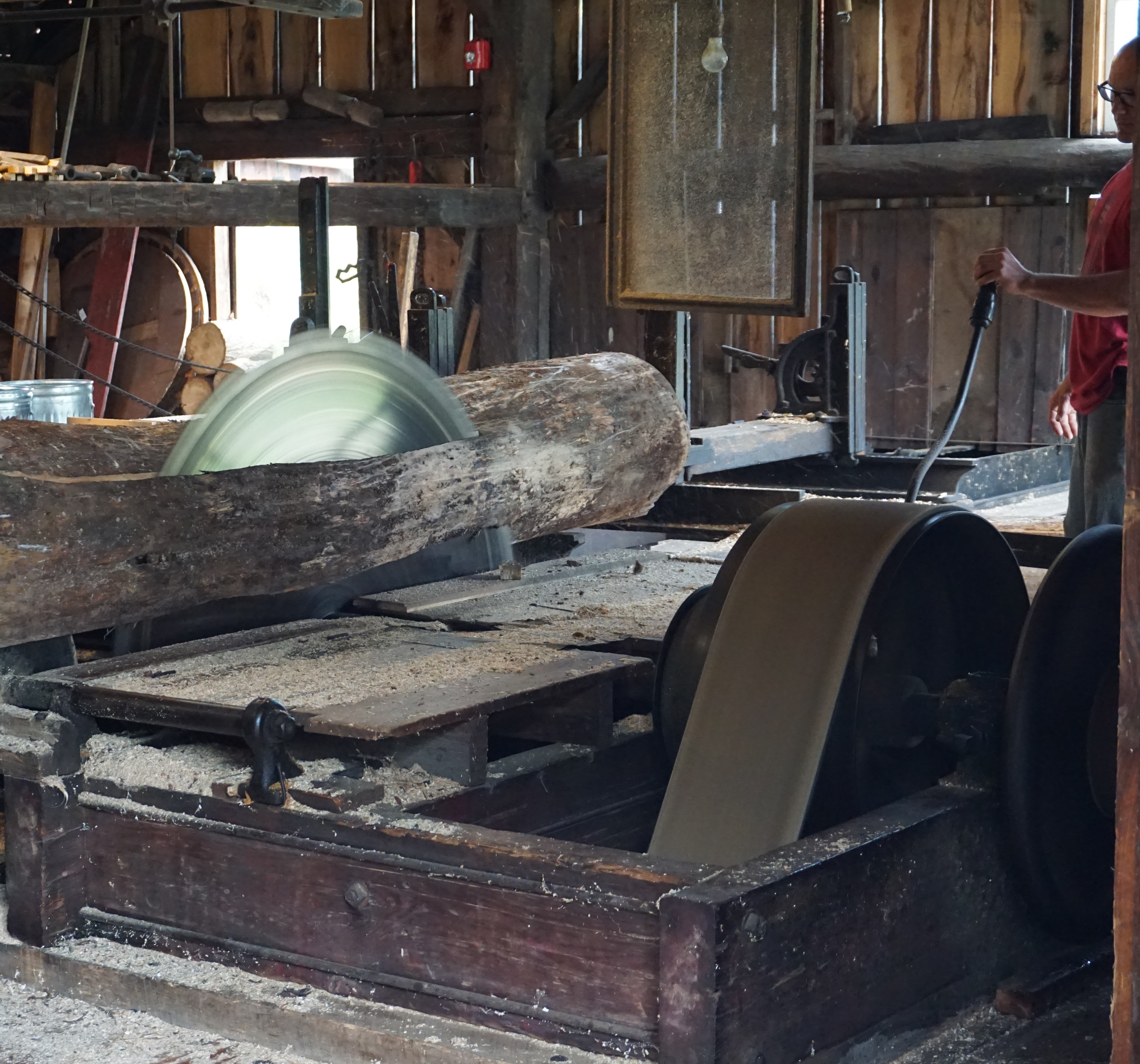When all the kids are home for the holidays and they’re off from their Jewish school we like to go out on (wallet-friendly and family-friendly) outings and excursions, called “Chol HaMoed Trips.” This is actually a tradition in more traditional communities (not always the wallet-friendly part). Albany is a mid-size region, but somehow we’ve always found new museums, nature outings, interesting places to turn into trips, with a little research, some creativity and lots of engaging enthusiasm. We find it especially important for our children on the holidays being that we are hosting so many students for so many meals and festivities (which we all love to do and are very invested in), that they have some family getaway time to enjoy as well.
This year we drove southwest of Albany to a small town called East Meredith, NY, to visit Hanford Mills, which is an 1800’s saw mill and grist mill that has been preserved into a living museum. In addition, as part of that trip, we visited nearby Chabad of Oneonta (and their Sukkah) and the AJ Reed Science Discovery Center at SUNY Oneonta (a very nice idea, that I’d hope Albany colleges can copy). On our way back one car headed home, while the other car visited some rural libraries as part of the #Library36er challenge (see more about that in this Yom Kippur post).
But all that is just background to some of the life messages we learned from visiting this very engaging, explanatory and interesting historic sawmill and grist mill at Hanford Mills:
 This is the giant waterwheel situated in the basement of the mill. It sits just behind a door that opens and closes access to the man-made 12-feet-deep pond behind it, siphoned off from a nearby creek. When the water-gates opened (yes, they did it just for us) water began rushing through over the wheel. But the wheel didn’t turn. The tour guide explained that each row on the waterwheel is a pair of buckets, and more buckets have to fill before it gains enough momentum to move. And once it reached that tipping point, boy did it turn!
This is the giant waterwheel situated in the basement of the mill. It sits just behind a door that opens and closes access to the man-made 12-feet-deep pond behind it, siphoned off from a nearby creek. When the water-gates opened (yes, they did it just for us) water began rushing through over the wheel. But the wheel didn’t turn. The tour guide explained that each row on the waterwheel is a pair of buckets, and more buckets have to fill before it gains enough momentum to move. And once it reached that tipping point, boy did it turn!
In Judaism, we learn that every drop counts, the smallest Mitzvah has value and every little bit makes a difference. While that’s true, and its a point the Rebbe repeatedly emphasized, to really turn our lives and get us spinning in the right direction it takes buckets to fill, and a series of buckets at that. The holidays are a time to fill and refill our buckets, to build spiritual momentum in our lives, and really get our wheels turning in the right direction.
 But that waterwheel doesn’t turn the saw directly. Instead, in the basement of that mill, there was an elaborate system of wheels and belts, larger and smaller, longer and shorter, one turning another, and this one turning another one, all based off the power from the water-wheel. Think about it: One missing belt would disrupt the whole connection. The water wheel could turn and turn away with great power but nothing beyond the missing belt would turn at all. The tour guide told us about the importance of belt maintenance especially back in the 1980’s when they were made of leather and needed to be oiled and treated so they were both pliable and flexible enough yet taut and firm enough to keep the turning wheels connected.
But that waterwheel doesn’t turn the saw directly. Instead, in the basement of that mill, there was an elaborate system of wheels and belts, larger and smaller, longer and shorter, one turning another, and this one turning another one, all based off the power from the water-wheel. Think about it: One missing belt would disrupt the whole connection. The water wheel could turn and turn away with great power but nothing beyond the missing belt would turn at all. The tour guide told us about the importance of belt maintenance especially back in the 1980’s when they were made of leather and needed to be oiled and treated so they were both pliable and flexible enough yet taut and firm enough to keep the turning wheels connected.
Every generation is another set of wheels in Jewish history. Indeed each person is both being turned and turning others in the big picture of Jewish life. But if the belt (i.e. the connection between generation, or between fellow Jews) slips, there goes the momentum and with it all the power going forward. Like the old leather belts in the sawmill, our belt connections need ongoign treatment and maintenance to ensure a healthy connection that allows for give and take, that is both firm and flexible – and most of all well connected!
 While standing upstairs in the sawmill and watching the saw speed its way through a log, you have no idea of what’s going on underneath – beneath the hood. It was clever of them to first show us the basement, and its waterworks, before entering the upstairs mill, so we’d appreciate all the that went into getting that big log saw (and other tools) turning and spinning and super fast speeds upstairs. In fact, subsequent wheels and belts (of varying sizes) turned even faster than the waterwheel itself, which explained how the water-wheel turning creates such momentum and speed to eventually have the sawmill saw spinning at the speed needed to saw through logs in mere seconds almost as if powered by electricity!
While standing upstairs in the sawmill and watching the saw speed its way through a log, you have no idea of what’s going on underneath – beneath the hood. It was clever of them to first show us the basement, and its waterworks, before entering the upstairs mill, so we’d appreciate all the that went into getting that big log saw (and other tools) turning and spinning and super fast speeds upstairs. In fact, subsequent wheels and belts (of varying sizes) turned even faster than the waterwheel itself, which explained how the water-wheel turning creates such momentum and speed to eventually have the sawmill saw spinning at the speed needed to saw through logs in mere seconds almost as if powered by electricity!
Often we only see a small slice or sliver of life, we’re often unaware of the many layers and history or cosmic significance that is behind it all. A Mitzvah may seem to be just a physical action, but getting under the hood tells us so much more. Being aware of all that goes into something makes it all the more meaningful and exciting.
and from Rabbi Moshe Denburg:
A few things stuck out for me from this sawmill trip as well. First of all, we were running on a tight schedule and couldn’t stay long enough for the full tour and all the activities offered. But I would have liked to, because the staff there was knowledgeable, invested and eager to share. Too often you go to places where the staff isn’t that familiar, it’s just a job, or they’ve repeated the tour so many times that they aren’t as invested and eager to share anymore. But this staff was both knowledgeable, invested and eager to share!
It was interesting to see many of the tools they used from the 1800’s. Ironically, many of the tooltips are the same that would be used today. Saw blades haven’t changed much, neither have the routers used to make handles in the milk boxes. Yes, the machinery and power and automation has changed drastically, but many of the tools themselves are the same or very similar! You can see it this way in Judaism as well. Our Tefillin are very similar to Tefillin of 500 years ago, the concept of a Sukkah is the same as the Talmud describes it, so much of Judaism hasn’t changed. But what we put into it, its context and useage changes in each generation and indeed, for each person.
Hanford Mills is also a grist mill, not only a sawmill. A grist mill is where corn and grains are ground up and packed into sacks. A big product for Hanford Mills was animal feed. And that explained a big oil-tank-type vat sitting outside the building which was filled with… sweet molasses. Why molasses? Because sweetening the feed mix made it more appealing for animals. Or you could say: Even animals like some Shabbos cereal! The same is true for our Judaism, and indeed of our chores and endeavors. It helps a lot when its sweeet and enjoyable, not just standard and obligatory. Find ways to make it sweet!
